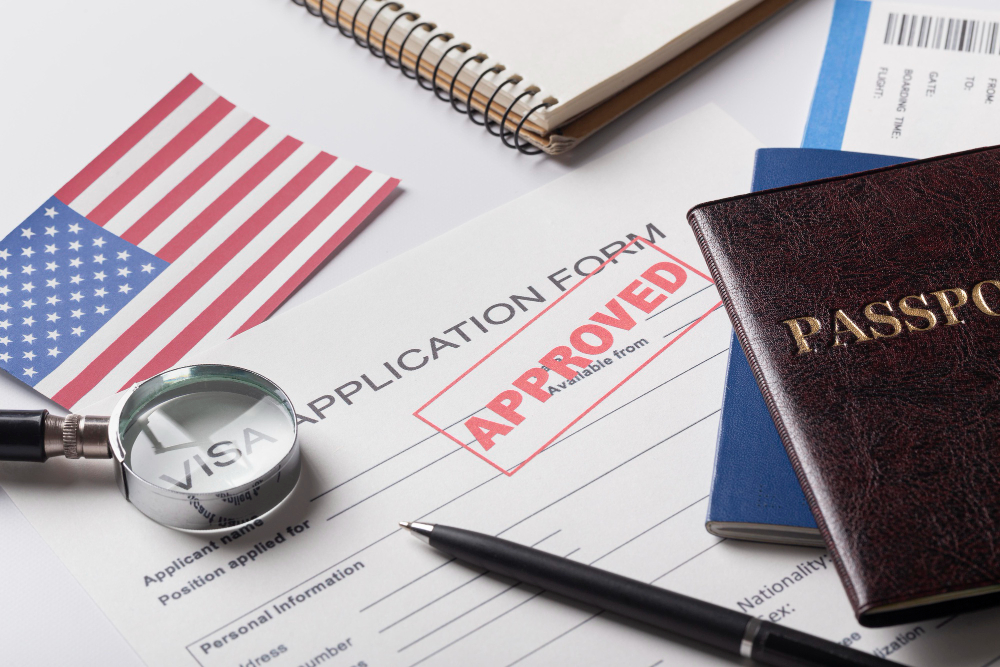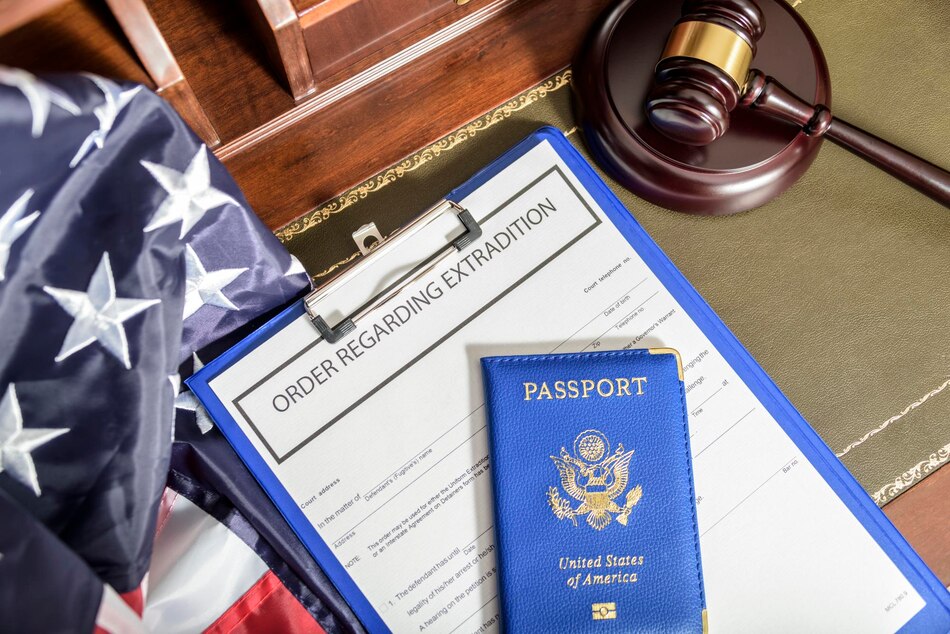Immigration court is a pivotal institution within the U.S. immigration system, determining the fate of individuals seeking to remain in the country. This court system deals with a wide range of cases, from asylum seekers fleeing persecution to individuals facing deportation for violating immigration laws. This blog aims to provide a comprehensive overview of immigration court, including its structure, procedures, and challenges, as well as offer insights into the experiences of those navigating this complex and often daunting system.
The Structure of Immigration Court

The Role of the Executive Office for Immigration Review (EOIR)
Immigration courts fall under the jurisdiction of the Executive Office for Immigration Review (EOIR), an agency within the U.S. Department of Justice. The EOIR is responsible for adjudicating immigration cases and ensuring that immigration laws are applied fairly and consistently. It oversees immigration courts across the country and employs immigration judges who preside over cases.
Immigration Judges
Immigration judges are appointed by the Attorney General and are responsible for making decisions on a wide range of immigration matters. These judges have the authority to grant or deny relief from removal, such as asylum, cancellation of removal, and adjustment of status. They also determine the admissibility of individuals seeking entry into the United States and issue deportation orders.
The Board of Immigration Appeals (BIA)
The Board of Immigration Appeals (BIA) is the highest administrative body for interpreting and applying immigration laws. It reviews decisions made by immigration judges and can affirm, reverse, or remand cases for further proceedings. The BIA’s decisions are binding unless modified or overruled by the Attorney General or a federal court.
The Immigration Court Process

Initiation of Proceedings
Immigration court proceedings typically begin when the Department of Homeland Security (DHS) issues a Notice to Appear (NTA) to an individual. The NTA outlines the charges against the individual and the reasons for their removal from the United States. The individual, referred to as the respondent, is then required to appear before an immigration judge.
Master Calendar Hearings
The first hearing in immigration court is usually a master calendar hearing. During this preliminary hearing, the immigration judge reviews the charges against the respondent and ensures that they understand their rights and the nature of the proceedings. The respondent may plead to the charges and request relief from removal. If the respondent does not have legal representation, they may request additional time to find an attorney.
Individual Hearings
If the respondent contests the charges or seeks relief from removal, the case proceeds to an individual hearing. During this hearing, both the respondent and the government present evidence and arguments. The respondent may testify, call witnesses, and submit documentation to support their case. The immigration judge evaluates the evidence and makes a decision based on the applicable laws and regulations.
Appeals
If either the respondent or the government disagrees with the immigration judge’s decision, they may appeal to the BIA. The BIA reviews the case and issues a written decision. If the BIA’s decision is unfavorable, the respondent may seek judicial review by filing a petition with the appropriate federal circuit court of appeals.
Types of Cases in Immigration Court

Asylum and Refugee Claims
Many cases in immigration court involve individuals seeking asylum or refugee status. Asylum seekers must demonstrate that they have a well-founded fear of persecution in their home country based on race, religion, nationality, membership in a particular social group, or political opinion. The burden of proof is on the asylum seeker to provide credible evidence supporting their claim.
Removal (Deportation) Proceedings
Removal proceedings are initiated when the DHS believes that an individual should be deported from the United States. Common grounds for removal include unlawful entry, visa overstays, criminal convictions, and violations of immigration laws. Respondents in removal proceedings may seek relief from removal through various forms of relief, such as cancellation of removal, adjustment of status, or asylum.
Adjustment of Status
Adjustment of status cases involve individuals who are seeking to change their immigration status to that of a lawful permanent resident (green card holder) while remaining in the United States. This process is typically available to individuals who meet certain eligibility criteria, such as having a qualifying family relationship or employment offer.
Cancellation of Removal
Cancellation of removal is a form of relief available to certain individuals in removal proceedings. There are two types of cancellation of removal: one for lawful permanent residents and another for non-permanent residents. To qualify, respondents must meet specific requirements, such as having a certain period of continuous residence in the United States and demonstrating that their removal would result in exceptional and extremely unusual hardship to a qualifying relative.
Challenges and Criticisms of Immigration Court

Backlog of Cases
One of the most significant challenges facing immigration courts is the backlog of cases. As of recent years, there are hundreds of thousands of pending cases, leading to lengthy delays in adjudication. These delays can have serious consequences for respondents, including prolonged detention and uncertainty about their future.
Access to Legal Representation
Access to legal representation is a critical issue in immigration court. Unlike criminal proceedings, there is no right to government-appointed counsel in immigration cases. Many respondents cannot afford an attorney and must navigate the complex legal system on their own. Studies have shown that individuals with legal representation are significantly more likely to succeed in their cases compared to those without representation.
Detention Conditions
Immigration detention conditions have been a subject of ongoing concern and criticism. Detainees often face overcrowded facilities, inadequate medical care, and limited access to legal resources. Prolonged detention can have detrimental effects on individuals’ physical and mental health, as well as their ability to effectively prepare for their cases.
Discretion and Variability in Decision-Making
There is considerable variability in decision-making among immigration judges. Factors such as geographic location, individual judge’s views, and local policies can result in different outcomes for similar cases. This lack of consistency can undermine the perceived fairness and integrity of the immigration court system.
Efforts to Reform Immigration Court

Increasing Resources and Efficiency
To address the backlog of cases, there have been calls to increase resources for immigration courts, including hiring more immigration judges and support staff. Streamlining procedures and implementing technological solutions, such as electronic filing and virtual hearings, can also help improve efficiency.
Expanding Access to Legal Representation
Advocates have pushed for expanding access to legal representation for individuals in immigration court. This includes providing funding for legal aid organizations, creating pro bono programs, and advocating for the right to appointed counsel for vulnerable populations, such as children and individuals with mental health issues.
Improving Detention Conditions
Reforming immigration detention conditions is crucial for ensuring the humane treatment of detainees. This includes reducing the use of detention, increasing oversight and accountability, and providing adequate medical care, legal resources, and access to family and community support.
Enhancing Training and Accountability for Judges
Improving the consistency and quality of decision-making in immigration court requires enhanced training and accountability for immigration judges. Ongoing education on immigration law, cultural competency, and best practices can help ensure fair and just adjudications. Additionally, implementing measures for accountability, such as performance reviews and oversight mechanisms, can help address concerns about discretion and variability in decisions.
Conclusion
Immigration court plays a vital role in the U.S. immigration system, adjudicating cases that determine the fate of individuals seeking to remain in the country. While the system faces significant challenges, including case backlogs, access to legal representation, and detention conditions, efforts to reform and improve immigration court are ongoing. Understanding the structure, processes, and issues surrounding immigration court is essential for anyone navigating this complex system or advocating for the rights of immigrants. Through continued advocacy, resource allocation, and policy reform, we can work towards a more fair, efficient, and humane immigration court system that upholds the rights and dignity of all individuals.
FAQs About Immigration Court
1. What is immigration court?
- Immigration court is a specialized court that handles cases related to immigration law, including deportation proceedings, asylum claims, and other immigration matters.
2. Who oversees immigration courts?
- Immigration courts are overseen by the Executive Office for Immigration Review (EOIR), which is a part of the U.S. Department of Justice.
3. What does an immigration judge do?
- Immigration judges preside over cases in immigration court, making decisions on matters such as asylum claims, deportation orders, and adjustment of status applications.
4. What is a Notice to Appear (NTA)?
- An NTA is a document issued by the Department of Homeland Security (DHS) to initiate removal proceedings against an individual. It outlines the charges and reasons for their potential deportation.
5. What happens during a master calendar hearing?
- A master calendar hearing is a preliminary hearing where the immigration judge reviews the charges against the respondent, ensures they understand their rights, and schedules further proceedings.
6. What is an individual hearing in immigration court?
- An individual hearing is where the respondent and the government present evidence and arguments regarding the respondent’s case. The immigration judge makes a decision based on the evidence presented.
7. Can I appeal an immigration judge’s decision?
- Yes, decisions made by an immigration judge can be appealed to the Board of Immigration Appeals (BIA). If the BIA decision is unfavorable, further appeal to a federal circuit court of appeals is possible.
8. What types of cases are heard in immigration court?
- Immigration court hears cases related to asylum claims, deportation proceedings, adjustment of status, and cancellation of removal, among other immigration matters.
9. How can I get legal representation in immigration court?
- Unlike in criminal cases, there is no right to government-appointed counsel in immigration court. However, respondents can hire an attorney, seek pro bono legal services, or get help from legal aid organizations.
10. What are the challenges facing immigration court?
- Immigration courts face challenges such as a backlog of cases, limited access to legal representation, poor detention conditions, and variability in decision-making among judges.
11. What efforts are being made to reform immigration court?
- Efforts to reform immigration court include increasing resources and hiring more judges, expanding access to legal representation, improving detention conditions, and enhancing training and accountability for judges.
12. How does the backlog of cases affect immigration court proceedings?
- The backlog of cases can lead to lengthy delays in hearings and decisions, resulting in prolonged uncertainty and detention for respondents.
13. What are the conditions like in immigration detention centers?
- Conditions in immigration detention centers vary, but issues such as overcrowding, inadequate medical care, and limited access to legal resources are common concerns.
14. How does variability in decision-making affect immigration court outcomes?
- Variability in decision-making among judges can lead to inconsistent outcomes for similar cases, raising concerns about fairness and the integrity of the immigration court system.
15. How can individuals support reforms in immigration court?
- Individuals can support reforms by advocating for policy changes, supporting legal aid organizations, volunteering as legal representatives, and raising awareness about the challenges faced by immigrants in the court system.











